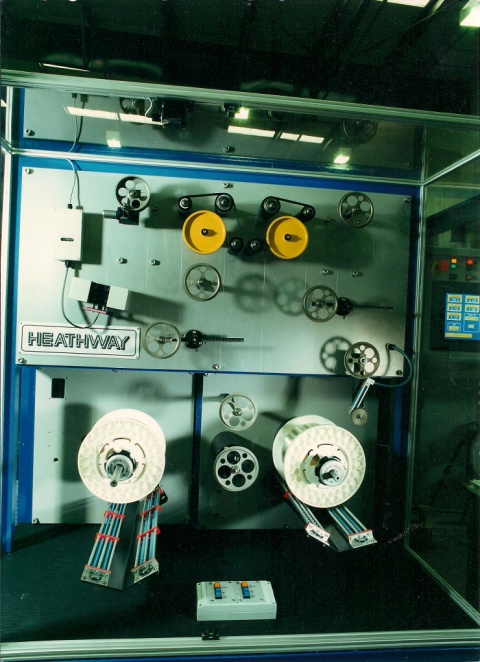Strategies on how robotic vision can minimize errors and optimize quality control
All You Required to Know Concerning Robotic Vision and Its Applications in Advanced Optical Measurement Systems
Robotic vision represents a considerable improvement in the intersection of computer system vision, expert system, and device discovering. This modern technology enhances the accuracy of optical measurement systems, making it possible for real-time information analysis and improved top quality control. Its effect extends several markets, from manufacturing to healthcare. However, the developing landscape of robot vision questions regarding future abilities and applications (optical measurement system). What advancements lie ahead in this transformative field?
Recognizing Robotic Vision: Trick Concepts and Technologies
Robotic vision includes the modern technologies and methods that make it possible for equipments to analyze and comprehend visual information from their setting. This area integrates aspects of computer vision, expert system, and maker knowing to help with automated decision-making based upon aesthetic information. Trick ideas include picture handling, which entails the enhancement and analysis of pictures to draw out purposeful attributes, and object acknowledgment, which permits makers to identify and categorize objects within a scene.

The Combination of Robotic Vision With Optical Measurement Systems
As industries increasingly demand precision and efficiency, the integration of robotic vision with optical measurement systems has emerged as a transformative technique. This harmony permits robots to regard and analyze their environments, enhancing the capacity of optical dimension systems to evaluate and evaluate things with unrivaled accuracy. By equipping optical sensors with sophisticated imaging modern technologies, robot vision enables real-time data collection and handling, assisting in immediate modifications to dimension criteria.
The combination encourages automated systems to find variations in measurements, surface area top quality, and positioning, which are vital in top quality control processes. Boosted algorithms, such as artificial intelligence, more boost this integration by enhancing the systems' ability to adapt to various environments and situations. The combination not just enhances dimension processes but likewise decreases mistakes, ensuring that products satisfy stringent industry standards, consequently strengthening the role of robotic vision in the future of optical measurement systems.
Applications of Robotic Vision in Manufacturing
In contemporary manufacturing environments, making use of vision systems has actually reinvented production procedures by allowing makers to do tasks with impressive accuracy and speed. Robotic vision systems are significantly employed for top quality control, where they examine items for flaws and assurance adherence to specifications. These systems utilize cameras and progressed formulas to assess items in real-time, considerably minimizing the threat of human mistake.
Furthermore, robotic vision helps with automation in production line, enabling robotics to properly determine elements and construct them with very little downtime. This innovation additionally boosts inventory monitoring, as vision systems can check supply levels and identify inconsistencies, guaranteeing a seamless supply chain.
Robotic vision help in the implementation of smart manufacturing facilities, where data from vision systems can be incorporated with various other technologies to optimize process (robotic vision). On the whole, the applications of robot vision in manufacturing show its vital duty in boosting efficiency, quality, and productivity throughout different fields
Robotic Vision in Medical Care: Transforming Patient Treatment

In rehab, robotic vision aids in keeping an eye on person progression and tailoring treatment sessions to individual demands. It sustains clinical specialists by automating jobs such as data collection and client tracking, permitting more time to focus on straight individual interaction. Additionally, robotic vision boosts telemedicine by making it possible for remote diagnosis and online assessments, linking the void between patients and health care suppliers. In general, the application of robotic vision in healthcare is reinventing individual care, leading to improved outcomes, efficiency, and client complete satisfaction.
Future Patterns and Developments in Robotic Vision Modern Technology
The rapid evolution of robot vision modern technology guarantees to better boost its applications across various fields, including medical care. Future trends show a substantial change towards incorporating expert system and equipment understanding, enabling systems to gain from substantial datasets and enhance accuracy over time. Enhanced sensor innovations and deep discovering algorithms are anticipated to refine things recognition capabilities, enabling robotics to interpret complex atmospheres better.

Additionally, the combination of augmented reality (AR) with robot vision will likely revolutionize just how robotics help in operations and diagnostics. This harmony will certainly help with real-time data visualization, boosting decision-making procedures. In addition, miniaturization of elements will cause more small and functional robot vision systems suitable for a selection of jobs. As these developments unravel, markets will certainly witness raised automation and efficiency, solidifying robotic vision as a cornerstone of cutting-edge technological solutions.
Often Asked Questions
What Are the Key Components of a Robot Vision System?
The primary parts of a robotic vision system include see cameras for image capture, cpus for information analysis, algorithms for interpretation, and actuators for motion. With each other, these components enable robotics to perceive and communicate with their setting efficiently.
How Does Robotic Vision Improve Accuracy in Measurements?
Robotic vision boosts dimension accuracy by using innovative imaging modern technologies, making it possible for exact item detection and spatial evaluation. This ability reduces human mistake, boosts repeatability, and enables real-time adjustments, inevitably enhancing total dimension official statement reliability and performance.
What Industries Benefit Most From Robotic Vision Innovation?
Different industries benefit greatly from robotic vision modern technology, including production, healthcare, agriculture, and logistics. These fields utilize improved accuracy, performance, and automation, leading to enhanced performance and reduced operational prices in their particular procedures.
Can Robotic Vision Equipments Operate In Low-Light Conditions?
Robotic vision systems can without a doubt function in low-light conditions, utilizing sophisticated sensing units and formulas to boost photo clarity. This ability allows them to do properly in various environments, including industrial and monitoring applications, despite site link having marginal lighting.
What Are the Expenses Related To Implementing Robotic Vision?
The prices related to implementing robot vision differ significantly, influenced by components such as cameras, software, and integration. Additional expenditures consist of upkeep, training employees, and possible upgrades to existing systems, which can collect in time.